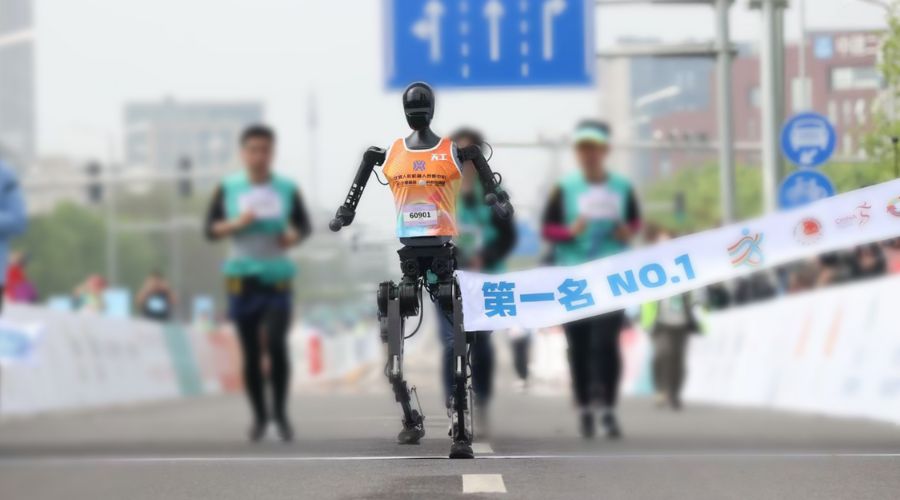In a groundbreaking blend of endurance and engineering, a humanoid robot named ATHENA has become the first of its kind to complete a half-marathon, marking a historic milestone in robotics and artificial intelligence.
Developed by a team of engineers at Nihon Robotics Institute, ATHENA crossed the finish line of the Tokyo Half-Marathon after running 21.1 kilometers (13.1 miles) in just under 5 hours, a feat previously considered unthinkable for a bipedal machine.
Dressed in a numbered race bib and accompanied by cheering crowds and curious onlookers, ATHENA maintained a steady pace throughout the race, navigating turns, elevation changes, and even interacting with participants using pre-programmed gestures of encouragement.
“This achievement is not just about speed — it’s about stamina, stability, and seamless interaction with a dynamic environment,” said Dr. Hiroshi Tanaka, lead roboticist on the project. “ATHENA’s successful completion of the race brings us closer to humanoids that can assist in real-world, real-time human activities.”
Equipped with advanced sensors, adaptive gait algorithms, and energy-efficient actuators, ATHENA demonstrated the potential of humanoid robots in fields ranging from healthcare to disaster response — and now, athletics.
The crowd erupted in applause as the robot raised its mechanical arms at the finish line. Though it cannot experience emotion, its creators were overwhelmed with pride.
“We programmed her to recognize the finish line and raise her hands — a simple act that mirrors human triumph,” said Mina Kobayashi, one of the AI engineers. “But the emotion you saw today was all ours.”
Guinness World Records has officially recognized ATHENA as the first humanoid robot to complete a half-marathon, sparking conversations worldwide about the future of robotics in sports and society.
As the lines between human capability and machine potential continue to blur, ATHENA’s race into history serves as a reminder: the future isn’t just coming — it’s already running beside us.







